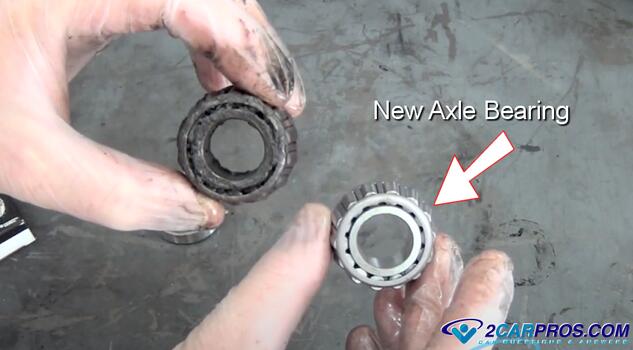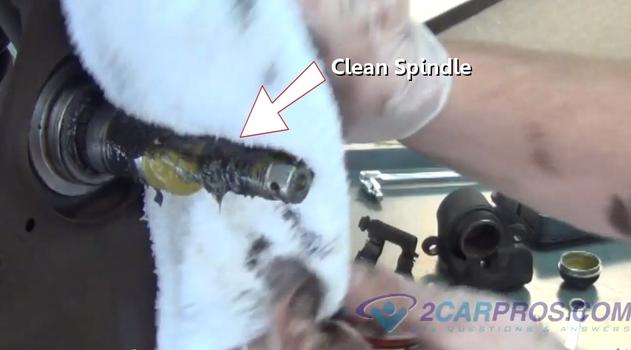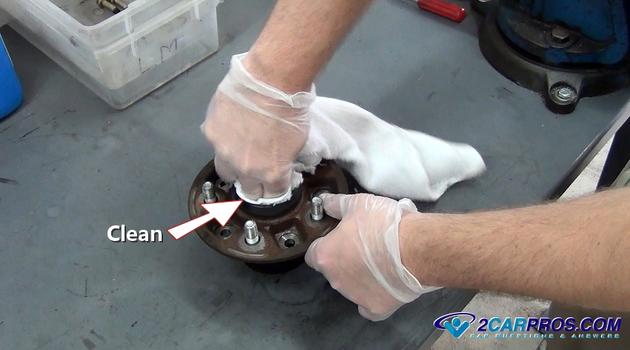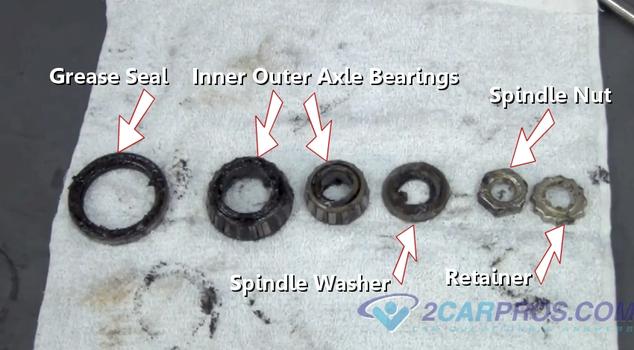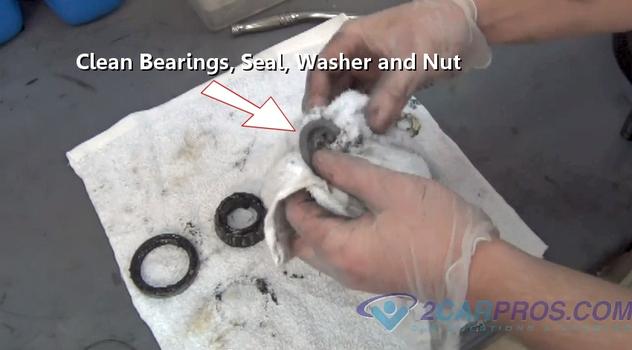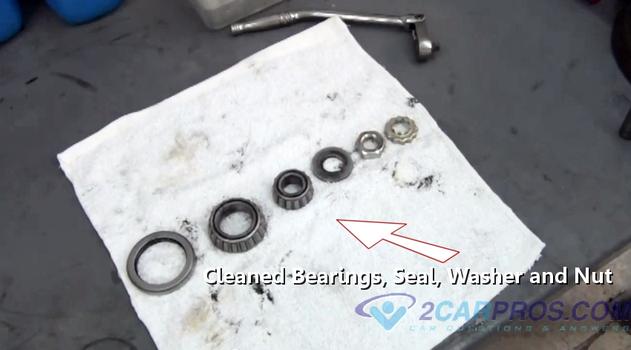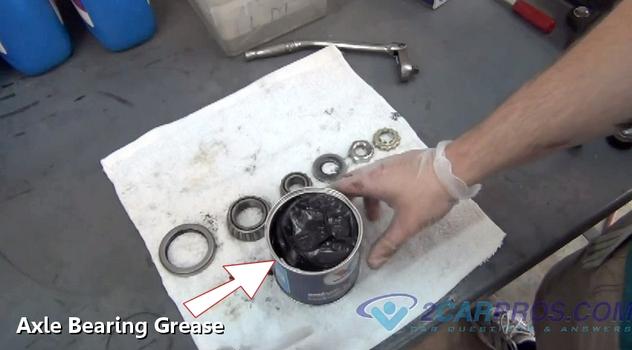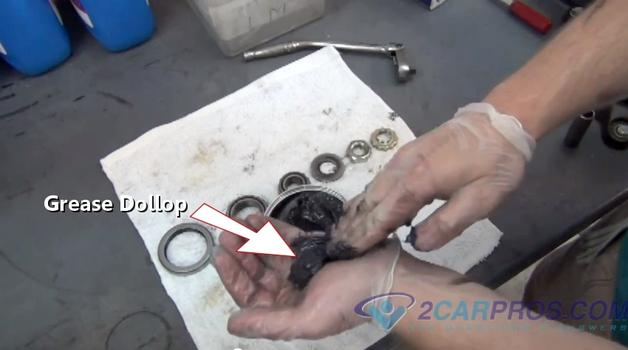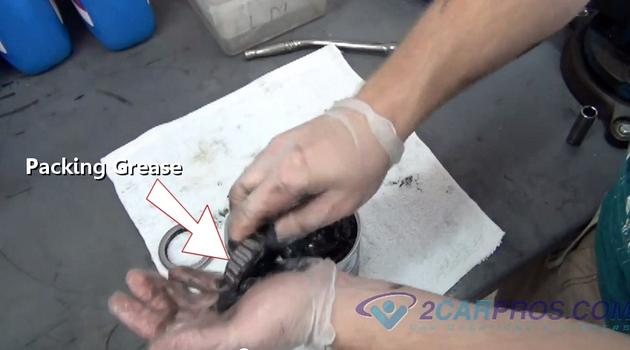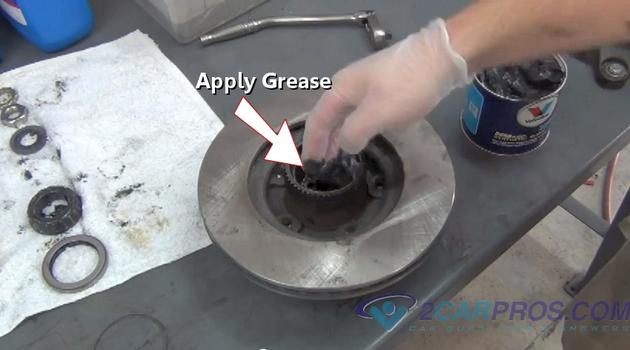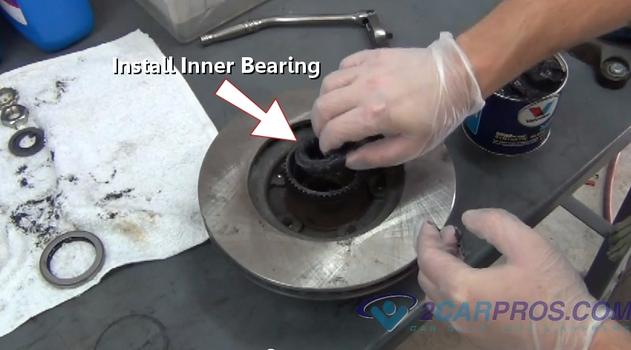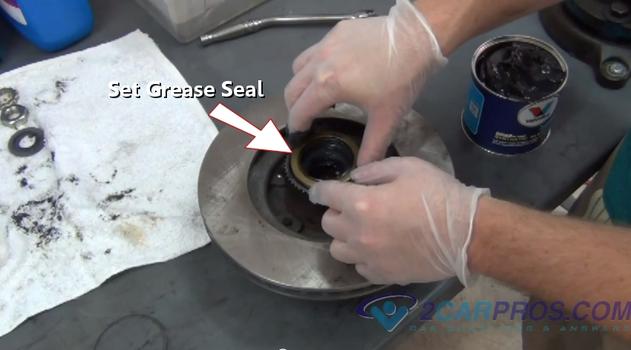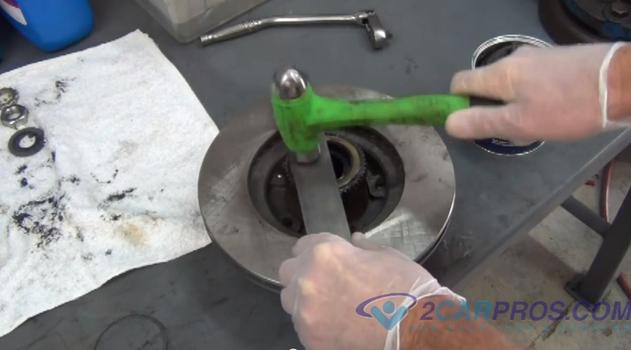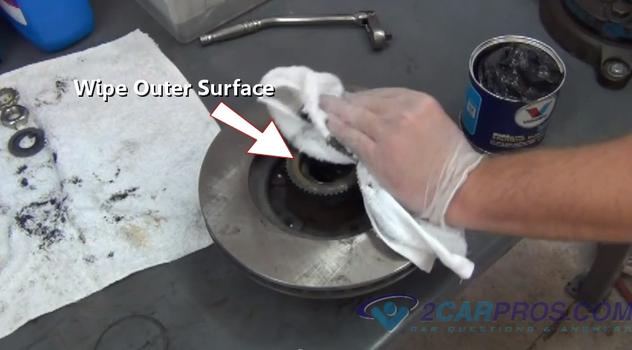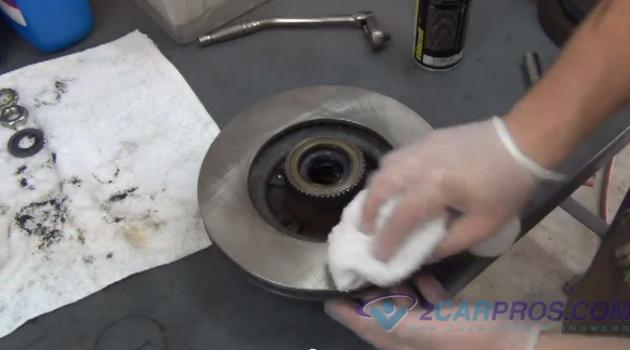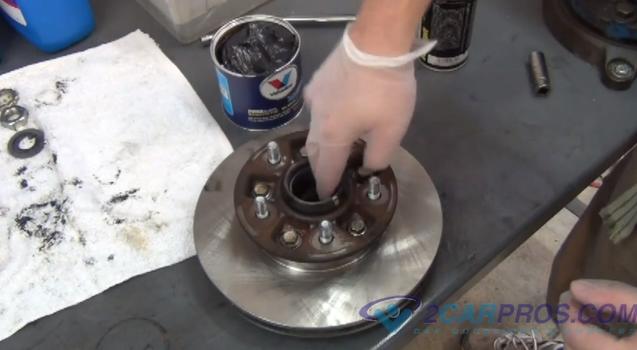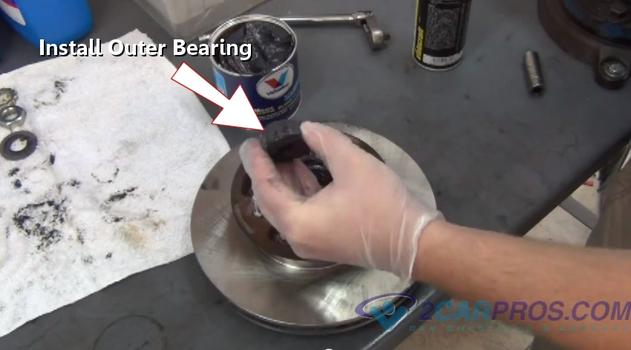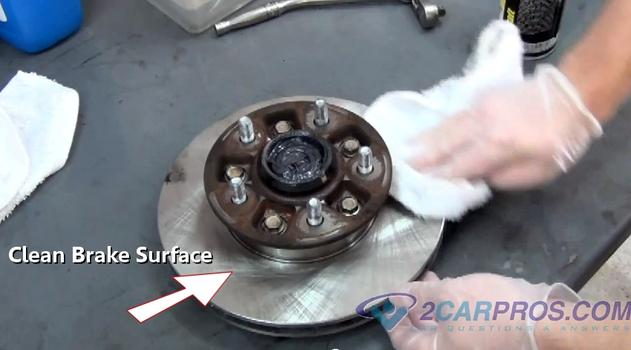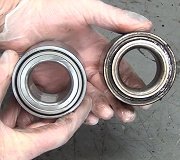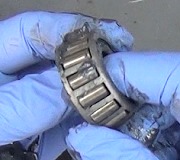This guide is for servicing (repacking) singular wheel bearings (not bearing hubs), this style of bearing are used on olds cars and trailers. Setting up (preload) these bearings once the repacking of the grease is completed must be done correctly or the bearing will fail as well the grease acts as a lubricant for the bearing while it's in operation.
Wheel Bearings Include
- Outer wheel bearing
- Outer wheel bearing race
- Inner wheel bearing
- Inner wheel bearing race
- Grease seal
- Cotter pin
- Retainer washer
Primarily this job will need to be performance on the front end while doing a brake job that includes changing out the brake rotor. New brake rotors will included new bearing races but not the bearings themselves.
Pro Tip: Buy replacement bearing when replacing the brake rotors.
The rotor and bearing assembly below is a "two piece" unit which separates at the bearing hub. This style of rotor and bearing assembly can be unbolted and the brake rotor replaced separately. Remove the rotor mounting bolts which will release the rotor from the bearing hub. This guide picks up after the brake rotor has been removed and is ready for reassembly.
1. Use a shop towel and clean the spindle, once clean inspect the spindle for wear and damage. This doesn't happen very often but when it does the spindle will need to be replaced.
2. Use a shop towel and remove the grease from inside the bearing hub, (rotor removed).
3. Next, layout the inner and outer wheel bearings, grease seals, spindle retainer and washer for cleaning.
4. Clean each part using a shop towel expect for new bearings. The old grease inside the inner and outer bearings will be forced out in the next step.
5. Re-align the cleaned components to be installed in the order ready for reassembly.
6. There are several kinds of grease, you want to use a high quality grease that will protect you're bearings for miles to come.
7. Scoop a hardy amount of grease out of the container and transfer it to the palm of the opposite hand, this is where gloves come in handy.
8. While grasping each bearing with the cone side up, thrust the grease into the bearing while forcing the old grease out, turn the bearing until all sides are done. Continue this action until both bearings are complete, this is called packing the bearings. Repair shops have a pump machine that performs this service.
9. With an additional grease dollop, coat inner and outer bearing races (rotor installed).
10. Once the new grease has been applied, reinstall the inner bearing (cone down).
11. After the bearing has been installed set the grease seal into place, install the seal with the lip facing inward.
12. Using flat bar stock or a seal installation tool, hammer the seal into the bearing hub, continue until flush.
13. With a clean shop towel, wipe the outside surface of the bearing hub.
14. Using carburetor or brake cleaner and a shop towel clean the rotor braking surface. Do not allow any brake or carburetor cleaner to contact the new grease inside the hub.
15. Next, gently turn the rotor assembly over and apply grease to the outer bearing race.
16. Install the outer wheel bearing (cone down) and seal with a layer of grease.
17. Once the outer bearing has been installed, use a clean shop towel and cleaner to remove any grease or dirt from the rotor surface. Please visit how to replace wheel bearings to see how the preload is set.
Watch the Video!
Please watch this video of the job being done to glean additional helpful information.
Credits
This guide knowledge base was created by the 2CarPros Team, and by Ken Lavacot: Automobile repair shop owner and certified master automobile technician of over 30 years. If you have question or need help please ask one of our experts we are happy to help. Please visit our 2CarPros YouTube Channel.
